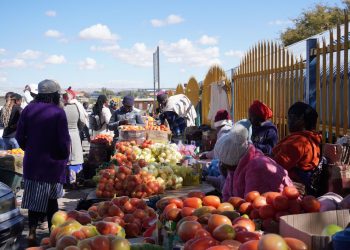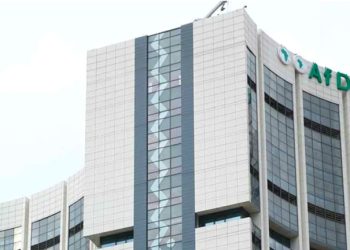
Namibia’s fuel price relief could be short lived amid indications that the gradual easing of lock down restrictions in China could force an upward adjustment going forward due to growing global demand.
This development will come as a shocker to Namibian motorists who are set to enjoy low fuel prices in May after the Ministry of Mines and Energy announced a price cut on Friday, which will reduce pump prices for petrol and diesel by N$1.20/l and 30 cents/l respectively.
The government also approved a temporarily reduction of levies imposed on fuel products, for a period of three months.
“Rising fuel prices is one of the biggest drivers of local inflation and weighs heavily on household budgets and overall consumption spending in the economy. Pressure on the Namibian government to provide some relief mounted after South Africa reduced their levies/taxes on fuel prices by R1.60 earlier this month. We view the N$1.20 levy/tax reduction as a major positive for local households who battle with rising food prices and rising interest rates, which add to budgetary pressures.
“Local fuel prices will allow households to spend additional money on alternative goods, potentially leading to higher VAT revenue for government. We therefore believe that some of the lost levy income can be offset by higher VAT revenue receipts. This will also benefit the economy as consumption spending is about 70% of GDP, “ Simonis Storm Economist Theo Klein told The Brief.
“However, a crucial upside risk to local fuel prices remains China. As China lifts their lockdown restrictions and continue to reopen their economy, we expect global oil prices to rise as a result of demand increasing from the world’s biggest oil buyer. This will likely lead to higher fuel prices in Namibia in coming months. Although petrol prices have been lowered, they remain 36.1% higher than 12 months ago.â€
First Capital Namibia Assistant Portfolio Manager & Economist, Milner Siboleka warned the supply uncertainty globally and the continued upward trend of diesel prices was of concern.
“At this point such developments are welcome as they relieve pressure on over-stretched consumers due to elevated inflationary pressures. Despite this relief, fuel prices remain elevated and will continue to reverberate through local inflation numbers in months to come. Overall, the less comforting development is the trajectory of diesel prices, which is on the rise and expected to trend up in the medium term despite the recent retreat in crude oil price. This poses upside risks to local production costs and local inflation given the relative use of diesel in farming and industrial production activities. I cannot rule out the possibility of further fuel price pressures due to supply uncertainty in replacing the 1 million barrels per day shortfall created by Russia, and the further depleting of crude oil stocks. Further depreciation of the local currency which is possible under the current monetary policy cycle adds another layer on local price pressures,†he said.
 FNB Namibia Group Economist, Ruusa Nandago said, “given that the international oil price remains elevated, this is certainly a welcome relief for consumers as it will ease some of the inflationary pressures they have been facing and will temper a further deterioration in disposable income. We do, however, still expect continued increases in interest rates in line with those in South Africa, given the rising inflation in that country.â€
IJG Securities Head of Research, Danie van Wyk said, “While the measures announced by the Ministry of Mines and Energy this morning are only temporary, the reduction in levies will be welcomed by consumers and businesses alike who have been battling higher food, fuel and other costs. The decision will weigh on the fiscus, but the additional government bond auction held earlier this week should give the government the necessary leeway to implement the temporary cuts.â€
Namibian fuel dealers are currently charged a levy of 90c/ litre on fuel, a Road Fund Administration levy of N$1,36/ litre, a Motor Vehicle Accident Fund levy of 47c/litre, and a National Energy Fund levy of 98c/litre, a position which has also been blamed for driving up the fuel pump price.
With effect from the 5th of next month, the levies will be temporarily slashed by 50%, except the MV Fund Levy which will be cut by 25%.
The Government, through the National Energy Fund (NEF), will incur approximately N$51.5 million for under recoveries to cushion consumers against a market related adjustment.
Namibia’s petrol and diesel prices have increased by 51% and 60% respectively in the last 12 months.
Morgan Stanley has increased its third- and fourth-quarter price forecasts for global benchmark Brent crude by US$10 a barrel due to a greater-than-expected supply deficit driven by Russia and Iran, and raised its third quarter estimate to US$130 a barrel and predicted a supply deficit of about 1 million barrels a day persisting throughout the year, according to a note dated April 21.











